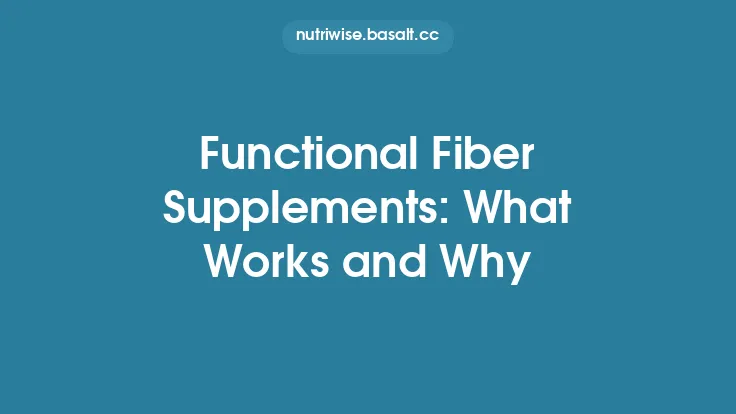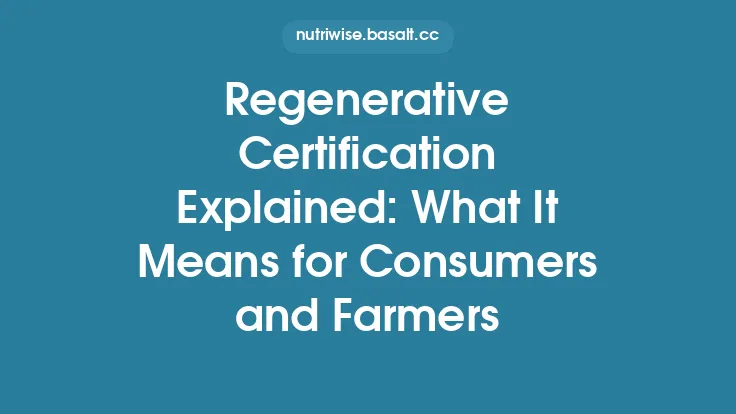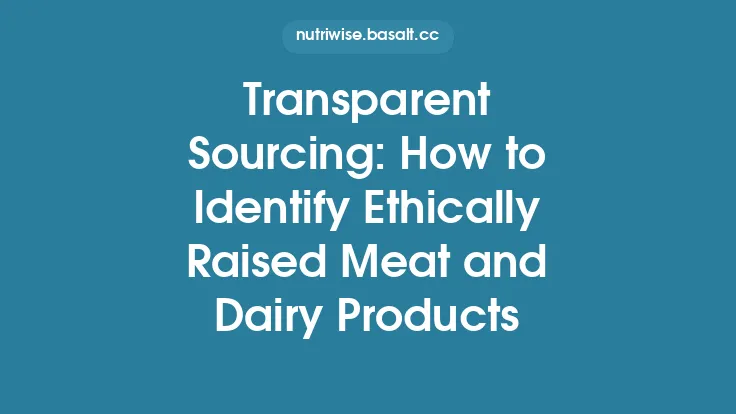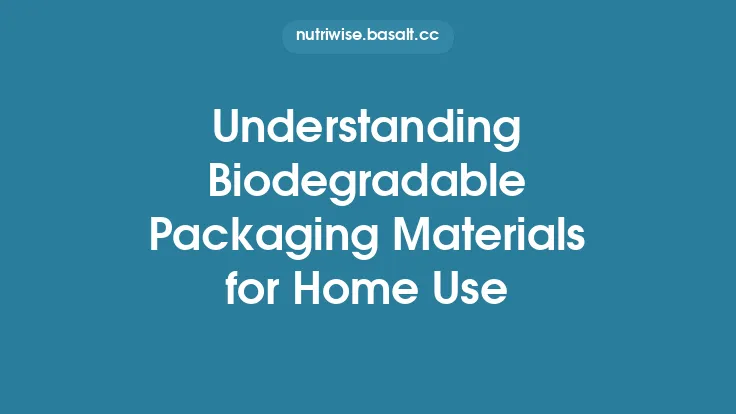Compostable packaging has moved from a niche curiosity to a mainstream option for food producers, retailers, and environmentally‑conscious consumers. Yet the market is crowded with a mix of genuinely sustainable solutions and products that only appear “green” on the surface. Understanding what truly works—and what doesn’t—requires a deep dive into the science of compostability, the standards that govern it, the material choices available, and the practical realities of getting these items into a compost system. This article provides a comprehensive, evergreen guide for anyone looking to evaluate compostable food packaging from a sustainability standpoint.
What Exactly Is Compostable Packaging?
Compostable packaging is a subset of biodegradable materials that, under defined conditions, break down into carbon dioxide, water, inorganic compounds, and biomass (compost) within a specific time frame—typically 90 days in industrial composting facilities. The key distinction from “biodegradable” is that compostable items must leave no visible residues and must meet rigorous performance criteria for both degradation rate and the quality of the resulting compost.
Core Requirements
- Complete Disintegration – The material must fragment into particles smaller than 2 mm within the stipulated time.
- Biological Conversion – Microorganisms must convert the fragments into CO₂, H₂O, and biomass, with a measured loss of organic carbon (usually >90%).
- No Toxic Residues – The resulting compost must pass leachate and ecotoxicity tests, ensuring it does not harm soil life or plants.
- Defined End‑of‑Life Pathway – The product must be clearly labeled for industrial composting, home composting (if applicable), or both.
Certification and Standards: The Benchmarks for Credibility
Because “compostable” can be misused in marketing, third‑party certification is essential. The most widely recognized standards are:
| Standard | Governing Body | Typical Test Conditions | End‑of‑Life Claim |
|---|---|---|---|
| EN 13432 | European Committee for Standardization | 58 °C, 50% humidity, 12 weeks | Industrial composting |
| ASTM D6400 | ASTM International (U.S.) | 58 °C, 50% humidity, 12 weeks | Industrial composting |
| ASTM D6868 | ASTM International (U.S.) | 58 °C, 50% humidity, 12 weeks | Home composting |
| ISO 17088 | International Organization for Standardization | Aligns with EN 13432/ASTM D6400 | Industrial composting |
| BPI (Biodegradable Products Institute) | BPI (U.S.) | Meets ASTM D6400 | Industrial composting (BPI‑certified logo) |
When evaluating a product, look for the certification logo, the specific standard cited, and the date of certification (standards evolve, and older certifications may not reflect current best practices).
Materials That Generally Perform Well
Polylactic Acid (PLA)
- Source: Fermented corn starch or sugarcane.
- Compostability: Meets EN 13432 and ASTM D6400; disintegrates in 90 days in industrial facilities.
- Strengths: Good clarity, barrier to oxygen, suitable for trays, clamshells, and clear films.
- Limitations: Low heat resistance (softens >60 °C), not suitable for high‑temperature food service (e.g., microwaving). Requires industrial composting; home composting is slow and often incomplete.
Bagasse (Sugarcane Fiber)
- Source: Fibrous residue from sugarcane juice extraction.
- Compostability: Certified under EN 13432; typically disintegrates within 30–60 days in industrial compost.
- Strengths: Naturally porous, good for take‑away containers, plates, and bowls. Provides a “paper‑like” feel with decent rigidity.
- Limitations: Can become soggy with high‑moisture foods unless coated; some coatings (e.g., PLA) may hinder compostability if not certified.
Mushroom Mycelium
- Source: Grown from fungal mycelium binding agricultural waste (e.g., corn husks, wheat straw).
- Compostability: Fully composts in 30–45 days in both industrial and home settings; passes EN 13432.
- Strengths: Excellent insulation, low carbon footprint, customizable shapes.
- Limitations: Currently limited to low‑load packaging (e.g., protective inserts, trays) due to mechanical strength constraints.
Polyhydroxyalkanoates (PHA)
- Source: Biopolymers produced by bacterial fermentation of organic feedstocks.
- Compostability: Meets ASTM D6400 and EN 13432; degrades in 45–90 days in industrial compost.
- Strengths: Higher heat resistance than PLA (up to 70 °C), good barrier properties, fully biodegradable in marine environments.
- Limitations: Higher production cost, limited commercial scale, and some blends may require specific composting conditions.
Cellulose‑Based Films
- Source: Regenerated cellulose from wood pulp or cotton.
- Compostability: Certified under EN 13432; disintegrates in 30–60 days.
- Strengths: Transparent, good oxygen barrier, suitable for snack wrappers and bakery bags.
- Limitations: Moisture sensitivity; often combined with PLA or other coatings that must also be compostable.
Materials That Frequently Fall Short
| Material | Common Issue | Why It Fails |
|---|---|---|
| Starch‑Based Blends (non‑certified) | Inconsistent degradation | Many contain non‑compostable additives (e.g., petroleum‑based plasticizers) that leave residues. |
| Coated Cardboard with Wax or PE | Incomplete composting | Wax or polyethylene layers inhibit microbial activity, causing the material to persist. |
| PLA with Non‑Compostable Ink | Toxic residues | Inks containing heavy metals or PVC can leach into compost, failing ecotoxicity tests. |
| Bioplastic “Compostable” Labels Without Certification | Greenwashing | Products marketed as compostable but lacking third‑party verification often do not meet the 90‑day degradation requirement. |
| Multi‑Layer Films (e.g., PLA/PE blends) | Mixed polymer incompatibility | The polyethylene layer prevents full breakdown, resulting in micro‑plastic fragments. |
When a packaging solution includes any of these problematic components, the overall product cannot be considered truly compostable, regardless of the primary material.
The Realities of Composting Infrastructure
Even a perfectly certified compostable package is useless if it never reaches a composting facility. Understanding the end‑of‑life pathway is crucial.
Industrial Composting Facilities
- Temperature: 55–60 °C (thermophilic phase) – essential for rapid breakdown of PLA, PHA, and other biopolymers.
- Retention Time: 12–16 weeks for full certification compliance.
- Geographic Availability: Concentrated in Europe, parts of North America, and some Asian cities. Rural areas often lack access, leading to landfill disposal.
Home Composting
- Temperature: Typically 30–45 °C – insufficient for PLA and many PHAs.
- Timeframe: 6 months to 2 years for complete degradation, if at all.
- Practical Tip: Only use home‑compost‑certified items (ASTM D6868) for backyard bins.
Municipal Organic Waste (MOW) Programs
- Some cities accept compostable packaging in curbside organic bins, but acceptance criteria vary. Always verify local guidelines.
Bottom line: The most reliable route for most compostable food packaging is industrial composting. When evaluating a product, ask: “Is there a facility within a reasonable transport distance that accepts this material?”
How to Evaluate Suitability for Food Packaging
- Check Certification – Look for EN 13432, ASTM D6400/D6868, or ISO 17088 logos.
- Identify the Material – Confirm the polymer or fiber type (PLA, PHA, bagasse, etc.).
- Assess Food Contact Safety – Verify compliance with FDA 21 CFR Part 177 (U.S.) or EU Regulation 1935/2004.
- Match Use‑Case Temperature – Ensure the material’s heat resistance aligns with the intended food service (e.g., hot meals, microwaving, refrigerated storage).
- Consider Mechanical Requirements – Evaluate strength, rigidity, and barrier needs (e.g., oil resistance for fried foods).
- Verify End‑of‑Life Pathway – Confirm that the local waste management system can process the material industrially or, if marketed for home compost, that it truly meets ASTM D6868.
- Look for Transparent Supply Chains – Companies that disclose feedstock origin (e.g., non‑GMO corn, sustainably harvested bagasse) add credibility.
Environmental Impact Assessment: Beyond Compostability
Compostability is only one piece of the sustainability puzzle. A holistic life‑cycle assessment (LCA) should consider:
- Feedstock Production – Land use, water consumption, and fertilizer inputs for corn, sugarcane, or other crops.
- Manufacturing Energy – Energy intensity of polymerization (PLA) versus mechanical processing (bagasse).
- Transportation Emissions – Distance from raw material source to manufacturing plant to end‑user.
- End‑of‑Life Emissions – CO₂ released during composting versus landfill methane generation.
- Potential for Circularity – Whether the material can be up‑cycled into higher‑value products (e.g., compost used for organic farming).
For example, PLA derived from waste corn (e.g., from food‑processing by‑products) can have a lower carbon footprint than virgin PLA, while bagasse uses a by‑product that would otherwise be burned or discarded.
Practical Guidance for Consumers and Food‑Service Operators
For Consumers
- Look for Certified Labels – Don’t rely on vague “biodegradable” claims.
- Separate Correctly – Place compostable packaging in the industrial compost bin if your municipality provides one; otherwise, keep it out of recycling streams.
- Avoid Contamination – Rinse heavily soiled items (e.g., greasy pizza boxes) before composting; excessive food residue can hinder the composting process.
For Restaurants, Cafés, and Food Manufacturers
- Audit Your Supply Chain – Request certificates of analysis and LCA data from packaging suppliers.
- Pilot Test – Run a small‑scale trial in an industrial composting facility to verify degradation performance.
- Educate Staff and Customers – Clear signage on packaging (“Compostable in industrial facilities – please place in green bin”) reduces mis‑sorting.
- Plan for End‑of‑Life Logistics – Partner with waste‑management firms that offer collection of compostable waste.
Emerging Innovations and Future Directions
- Hybrid Compostable‑Recyclable Systems – Research into polymers that can be both mechanically recycled and industrially composted, reducing reliance on a single waste stream.
- Enzyme‑Enhanced Compostable Films – Incorporating biodegradable enzymes that accelerate breakdown at lower temperatures, potentially enabling home composting of PLA.
- Carbon‑Negative Biopolymers – Materials produced from captured CO₂ (e.g., carbon‑negative PLA) that offset emissions during feedstock cultivation.
- Smart Compostability Indicators – Color‑changing inks that signal when a package has fully disintegrated, helping waste‑management workers verify proper processing.
- Closed‑Loop Food‑Packaging Loops – Initiatives where compost from packaging is returned to farms that grow the feedstock for the next generation of packaging, creating a true circular economy.
Bottom Line: Making Informed Choices
Evaluating compostable packaging requires a multi‑dimensional approach:
- Certification guarantees that a product meets scientifically defined compostability criteria.
- Material science tells you whether the package can handle the intended food type and temperature.
- Infrastructure reality determines whether the package will actually be composted rather than landfilled.
- Life‑cycle perspective ensures that the environmental benefits of compostability are not offset by upstream impacts.
By scrutinizing these factors, consumers, food‑service operators, and manufacturers can move beyond marketing hype and select compostable packaging solutions that truly deliver on their promise of reduced waste and a healthier planet.





